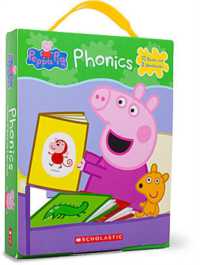- ホーム
- > 洋書
- > 英文書
- > Literary Criticism
Full Description
Often perceived as merely formulaic or historical documents, dramatic prologues and epilogues- players' comic, poetic bids for the audience's good opinion-became essential parts of Restoration theater, appearing in over 90 percent of performed and printed plays between 1660 and 1714. Their popularity coincided with the rise of the English actress, and Prologues and Epilogues of Restoration Theater unites these elements in the first book-length study on the subject. It finds that these paratexts provided the first sanctioned space for actresses in Britain to voice ideas in public, communicate directly with other women, and perform comedy-arguably the most powerful type of speech, and one that enabled interrogation of misogynist social practices. This book provides a taxonomy of prologues and epilogues with a corresponding appendix, and demonstrates through case studies of Anne Bracegirdle and Anne Oldfield how the study of prologues and epilogues enriches Restoration theater scholarship.
Contents
Table of ContentsAcknowledgmentsIntroduction What can prologues and epilogues tell us about Restoration theater? Prologues and epilogues as paratextsGender as a defining elementComic Performance Audience Taste and Influence Betweenness, the actress, and the epilogue Agency: Actor, Author, Audience In print: Broadsides, Quartos, Compilations, Pictures Chapter overview PART I: Prologues and Epilogues: A Gendered TaxonomyChapter 1: Male and Female Cloaked, and Male Exposed, Paratexts Cloaked and Exposed Paratexts: Some Definitions The Male Cloaked Paratext: Thomas Betterton and Congreve's The Way of the World; Charles Hart and Dryden's The Conquest of Granada, Part IThe Female Cloaked Paratext: Elizabeth Barry's Popish Prologues; Mary Porter and Pix's The Different Widows The Male Exposed Paratext: Joseph Williams and the "drunken prologue" to The Mistakes; Joseph Haines and the "Ass Epilogue" to Scott's The Unhappy Kindness Chapter 2: The Female Exposed Paratext, Part one: Actress as Joker and Target Revived Epilogues: Nell Gwyn and Dryden's Tyrannick Love; Mary Lee, Lady Slingsby and Otway's Alcibiades Gender Confirmation and Transformation through Breeches: Hester Santlow and D'Urfey's Don Quixote Part II The Virgin's Self-Marketing: Letitia Cross and Pix's Ibrahim, Cibber's Love's Last Shift, and Vanbrugh's The Relapse Tendentious Paratexts: Mrs Bowman and Hopkins's Boadicea Chapter 3: Female Exposed Paratexts, Part two: Solidarity and Social CritiqueFemale Solidarity: Sarah Cooke and Rochester's Valentinian; Dryden's The Princess of Cleve Social Critique: Critiques of Love and Marriage: Charlotte Butler and Behn's The City-Heiress; Mocking Male Sexuality: Mrs Knepp and Wycherley's The Country Wife; Male Mistreatment of Women: The Constant NymphPART II: The Impact of ParatextsChapter 4: Vestal Interests: Anne Bracegirdle's ParatextsCredibility of the virgin actress: Satires on Bracegirdle Bracegirdle's self-constructed virginityRaped heroines: The virtuous non-virgins Rape roles with prologues or epilogues Nonvirgin roles The height of fame: Bracegirdle's prologue to Congreve's Love for Love Chapter 5: Bawdy Language: The Reception History of Addison's Epilogue to The Distrest Mother The bawdy epilogue: why all the fuss? The Epilogue in question: Addison's contribution to Philips's The Distrest Mother How to watch epilogues: The Spectator weighs in Pamela as Theater Critic Conclusion Appendix: Female Prologues and Epilogues by type Bibliography Index







